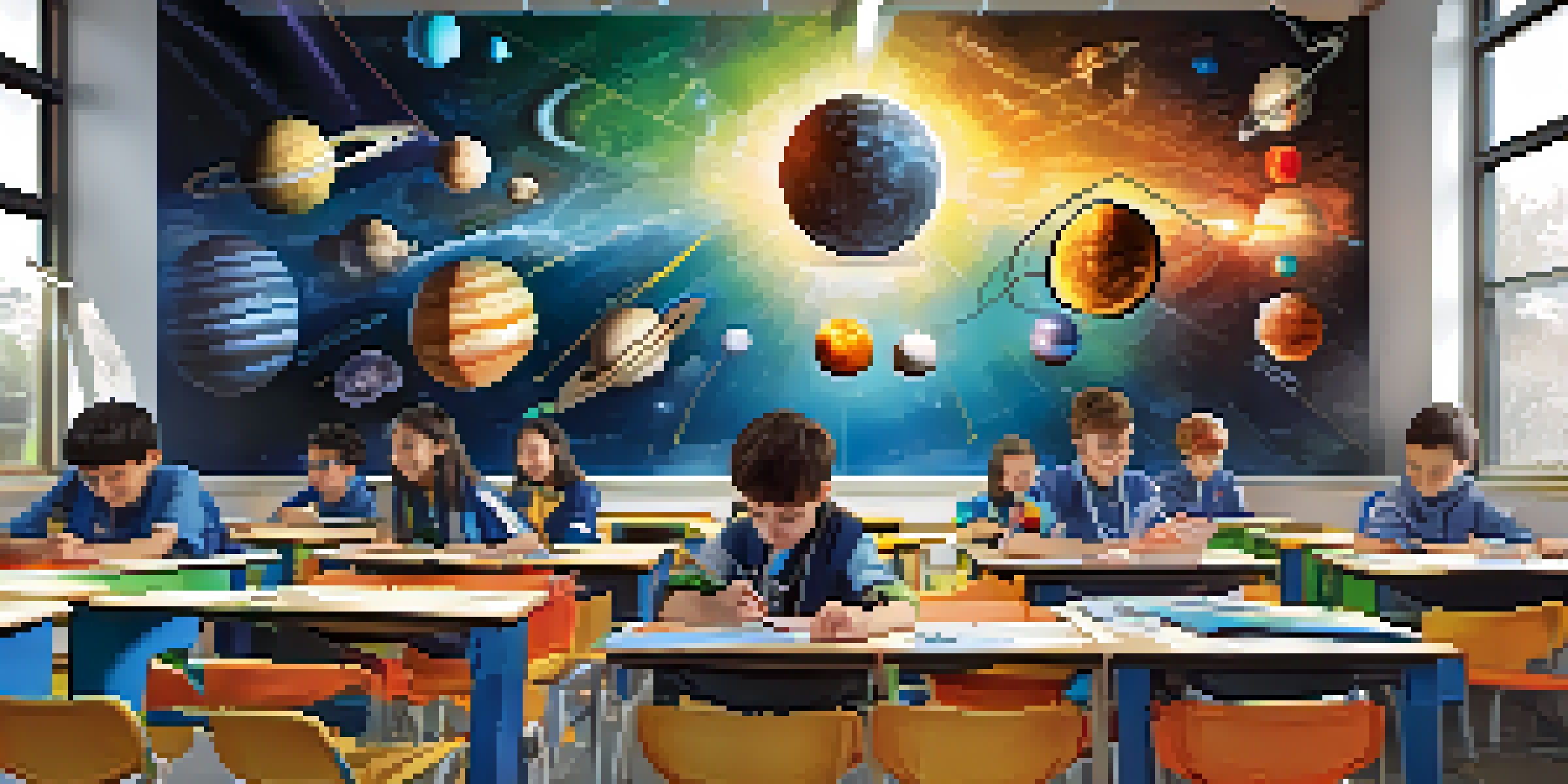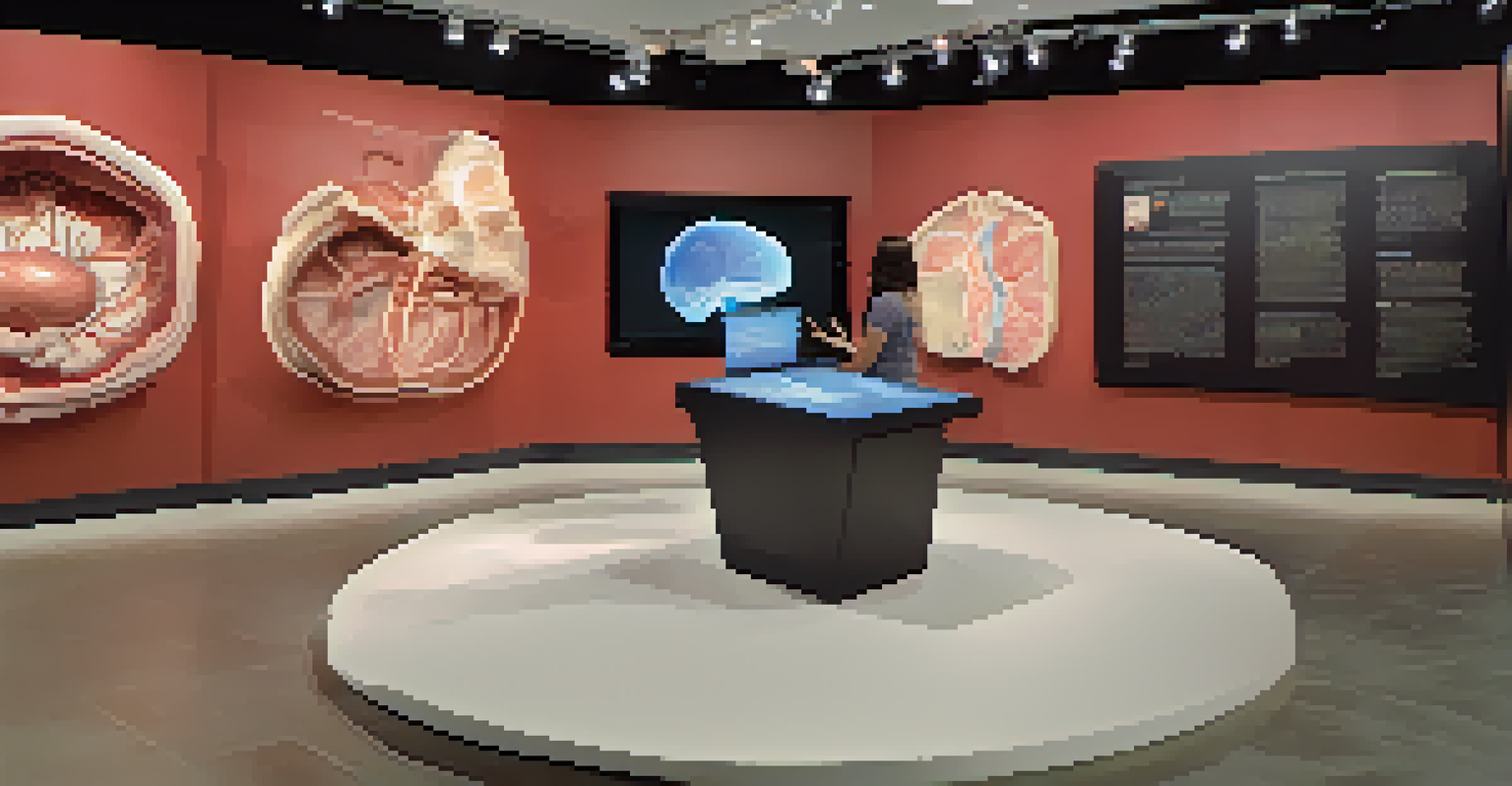Interactive Science Labs: AR for Immersive Learning Solutions

Understanding Interactive Science Labs in Education
Interactive science labs are innovative educational environments that enhance traditional learning methods. By incorporating technology, especially Augmented Reality (AR), these labs bring science concepts to life, making them more accessible and engaging. Imagine students virtually dissecting a frog or exploring the human body in 3D; this kind of immersive experience fosters a deeper understanding of complex subjects.
The future belongs to those who believe in the beauty of their dreams.
The primary goal of these labs is to create a hands-on learning experience that encourages exploration and experimentation. With AR tools, students can visualize abstract concepts, which can sometimes feel distant or confusing when explained through conventional means. This shift not only captivates students' attention but also inspires curiosity and a desire to learn more.
Moreover, interactive science labs support different learning styles, catering to visual, auditory, and kinesthetic learners alike. For instance, while some students grasp concepts easily through visual aids, others may benefit from hands-on interactions with virtual simulations. This versatility ensures that every student has the opportunity to thrive in their scientific endeavors.
The Role of Augmented Reality in Learning
Augmented Reality is a technology that overlays digital information onto the real world, creating an interactive experience. In educational settings, AR can transform a simple classroom into a dynamic learning environment where students engage with content in unprecedented ways. By using AR applications, learners can manipulate 3D models, conduct virtual experiments, and visualize scientific phenomena that would be impossible to replicate in a traditional lab.

This tech-savvy approach allows students to interact with complex scientific concepts directly, making learning more relatable and exciting. For example, instead of reading about the solar system, students can explore it firsthand, moving planets around and examining their orbits. Such active participation reinforces understanding and retention, as students are not merely passive recipients of information.
Furthermore, AR can bridge gaps in education by providing resources that may be limited in physical classrooms. Schools with fewer resources can utilize AR to deliver high-quality educational experiences, ensuring that all students have access to advanced learning tools. This democratization of education through technology is a game-changer for many learners.
Benefits of Immersive Learning Solutions
Immersive learning solutions, particularly those powered by AR, offer numerous benefits that enhance the educational experience. One significant advantage is increased engagement; students are often more motivated to learn when they can interact with the material. This heightened engagement leads to improved focus, better participation, and a more enjoyable learning atmosphere.
Education is the most powerful weapon which you can use to change the world.
Another benefit is the ability to conduct experiments safely without the risks associated with traditional lab work. Students can explore dangerous chemical reactions or study the anatomy of a living organism without any health hazards. This safety aspect is crucial, especially in introductory courses where learners might not yet have the skills or knowledge to handle real-life lab materials safely.
Additionally, immersive learning provides instant feedback, allowing students to learn from their mistakes in real-time. This immediate response helps solidify understanding, as learners can adjust their approach based on the results they see. Such an iterative process encourages resilience and critical thinking, essential skills for scientific inquiry.
Challenges of Implementing AR in Education
While the benefits of AR in interactive science labs are compelling, there are challenges to consider. One of the primary obstacles is the cost associated with acquiring the necessary technology and resources. Schools often face budget constraints, making it difficult to invest in the latest AR tools and equipment, potentially limiting access to these innovative learning solutions.
Additionally, there is a learning curve associated with integrating new technology into existing curricula. Educators need adequate training to effectively utilize AR tools and incorporate them into their lessons. Without proper support and professional development, the full potential of AR may not be realized, resulting in frustration for both teachers and students.
Finally, not all students may have equal access to technology outside of the classroom. While AR can greatly enhance learning, disparities in access to devices and internet connectivity can create inequities among students. Addressing these issues is critical to ensure that all learners can benefit from immersive educational experiences.
Future Trends in Interactive Science Labs
The future of interactive science labs looks promising, with ongoing advancements in AR technology poised to revolutionize education further. As AR applications become more sophisticated, we can expect even more engaging and realistic simulations that will transform how students learn about science. Imagine virtual laboratories where students can conduct experiments with unparalleled precision and realism.
Additionally, the integration of Artificial Intelligence (AI) into AR platforms could personalize learning experiences, catering to individual student needs and preferences. AI could analyze a student’s progress and tailor content accordingly, providing targeted support where it’s most needed. This level of customization could significantly enhance student outcomes and engagement.
Moreover, collaborative AR experiences are likely to become more prevalent, enabling students from different locations to engage in shared learning experiences. Virtual field trips, interactive group experiments, and real-time discussions can break down geographical barriers, fostering a sense of community among learners worldwide. Such innovations will undoubtedly enrich the educational landscape and inspire the next generation of scientists.
Real-World Applications of AR in Science Education
Real-world applications of AR in science education are already making waves in classrooms around the globe. For instance, some schools are using AR apps to enhance biology lessons by allowing students to visualize cellular structures in 3D. This hands-on approach helps students grasp complex ideas, such as cell division and genetic variation, in ways that traditional textbooks simply cannot.
Another exciting application is in the field of chemistry, where AR simulations enable students to conduct virtual experiments that demonstrate chemical reactions and molecular bonding. By manipulating virtual elements, learners can observe outcomes without the risks associated with handling real chemicals. This innovative approach not only boosts understanding but also ignites interest in the subject matter.
Additionally, museums and science centers are adopting AR to create interactive exhibits that engage visitors of all ages. By incorporating AR technology into their displays, these institutions provide enriching experiences that allow people to explore scientific concepts through immersive storytelling. This blending of education and entertainment captivates audiences, encouraging lifelong learning and curiosity about the world around us.
Conclusion: The Future of Learning with AR
In conclusion, interactive science labs powered by AR present a transformative approach to education that fosters deeper engagement and understanding. By bridging the gap between theoretical knowledge and practical application, AR allows students to explore complex scientific concepts in a safe and dynamic environment. As we continue to embrace technology in education, the potential for immersive learning solutions becomes increasingly evident.
While challenges remain in the implementation of AR in classrooms, the benefits far outweigh the obstacles. With the right investments, training, and support, educators can harness the power of AR to create enriched learning experiences that inspire and motivate students. The ongoing evolution of this technology promises to make science education more accessible, engaging, and effective for learners everywhere.

As we look to the future, it’s clear that AR will play a pivotal role in shaping the landscape of education. By fostering curiosity and encouraging exploration, interactive science labs equipped with AR technology are not just enhancing learning; they are igniting a passion for discovery that will influence the next generation of innovators and thinkers.